#easternchristianity
Quote
You may find yourself hampered by someone who sows tares of despondency. He tries to prevent you from climbing to such heights of holiness by discouraging you with various thoughts. For instance, he will tell you that it is impossible for you to be saved and to keep every single one of God's commandments while you live in this world. When this happens you should sit down in a solitary place by yourself, collect yourself, concentrate your thoughts and give good counsel to your soul, saying: "Why, my soul, are you dejected, and why do you trouble me? Put your hope in God, for I will give thanks to Him; for my salvation lies not in my actions but in God (cf. Ps. 42:5). Who will be vindicated by actions done according to the law (cf. Gal 2:16)? No living person will be vindicated before God (cf. Ps. 143:2). Yet by virtue of my faith in God I hope that in His ineffable mercy He will give me salvation. Get behind me, Satan (cf. Matt. 16:23). I worship the Lord my God (cf. Matt. 4:10) and serve Him from my youth; for He is able to save me simply through His mercy. Go away from me. The God who created me in His image and likeness will reduce you to impotence.”
― St. Symeon the New Theologian

9 notes
·
View notes
Text

Recycle Clothing Wishing You A Happy Easter Resurrection Sunday
#eastersunday#easter egg#recycle clothing#manufacturer#supplier#vendors#christianfestival#holyweek#easternchristianity#TrinitySunday#PalmSunday
0 notes
Photo

Jehovah Sabaoth is one of God’s names in the Bible. The name literally translates as “The Lord of Hosts” or “The Lord of Armies.” The image of God the Father is quite controversial but still widespread in Eastern Christianity. God is shown as an old man with a long gray beard and hair. As you see in the icon, He blesses with His right hand using two fingers, which is a characteristic of Old Believer icons. The icon itself was painted by an anonymous painter in Russia in the second part of the 19th century.
#sabaoth#godthefather#lordofhosts#russianicon#russianicons#russianiconcollection#antiqueicon#iconography#christianity#orthodoxy#orthodoxicon#christianart#orthodoxart#orthodoxchristian#easternchristianity#easternorthodoxy#artcollection#artcollecting#artcollector#religiousicons
22 notes
·
View notes
Photo

Fascinating displays on #easternchristianity & pop culture @museumofbible (at Museum of the Bible) https://www.instagram.com/p/CSHd_CnlLcu/?utm_medium=tumblr
0 notes
Photo

Happy Easter to all my Orthodox friends! Sretan Uskrs! 🎉 . . . . . #easter #passover #gregoriancalendar #juliancalendar #christian #easternchristianity #instaeaster #holiday #easterbunny #instagrameaster #newtestament #jesus #moveablefeast #pentecost #lent #eastertide #easternorthodoxchurch #hebrewcalendar #lunisolarcalendar #lastsupper #holysaturday #maundythursday #bloodofchrist #eastercontroversy #firstcouncilofnicaea #holyweek #eastereggs #greatlent #crucifixionofjesus #westernchristianity (at Novi Sad, Serbia) https://www.instagram.com/p/B_J_zmonJZ2/?igshid=23czn23i71t7
#easter#passover#gregoriancalendar#juliancalendar#christian#easternchristianity#instaeaster#holiday#easterbunny#instagrameaster#newtestament#jesus#moveablefeast#pentecost#lent#eastertide#easternorthodoxchurch#hebrewcalendar#lunisolarcalendar#lastsupper#holysaturday#maundythursday#bloodofchrist#eastercontroversy#firstcouncilofnicaea#holyweek#eastereggs#greatlent#crucifixionofjesus#westernchristianity
0 notes
Audio
Paulist Fr. Ron Roberson is one of two Paulist Fathers who work full-time in the area of ecumenical and interfaith relations. In this great conversation with Jennifer Szweda Jordon, Fr. Ron talks about his work at the USCCB as well as his own conversion and vocation stories.
3 notes
·
View notes
Photo

A #Byzantine #Christmas... NKTAR Theater. Let the #preparations go #ahead... #lebanon #greece #byzantine #orthodox #EasternChristians #chant #voices #nikodimoskabarnos (at Roumieh)
#byzantine#lebanon#greece#orthodox#christmas#nikodimoskabarnos#preparations#easternchristians#chant#ahead#voices
0 notes
Video
youtube
Seeking to build #ecumenical and #interfaith bridges is a passion for the @paulistfathers.
In fact, two #PaulistFathers work full-time in this area, including #Paulist Fr. Ron Roberson, who specializes in #EasternChristianity. This video is Fr. Ron’s story.
4 notes
·
View notes
Text
Saints&Reading: Wednesday, December, 7, 2022
december 7_november 24
THE HOLY GREAT MARTYR CATHERINE OF ALEXANDRIA (305)
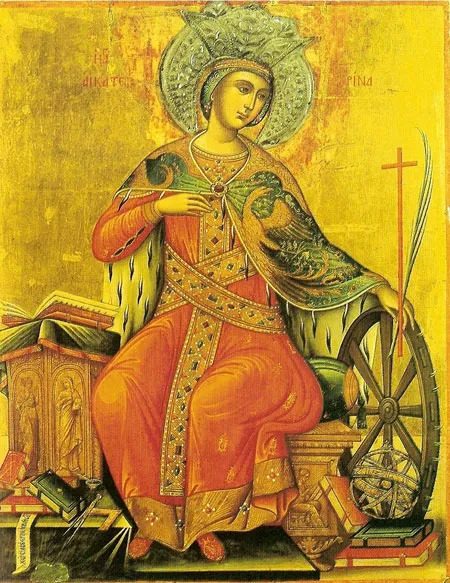
The Holy Great Martyr Katherine was the daughter of Konstos, the governor of Alexandria, Egypt during the reign of Emperor Maximian (305-313). Living in the capital, the center of Hellenistic knowledge, and possessed of a rare beauty and intellect, Katherine received an excellent education, studying the works of the greatest philosophers and teachers of antiquity. Young men from the most worthy families of the empire sought the hand of the beautiful Katherine, but she was not interested in any of them. She told her parents that she would enter into marriage only with someone who surpassed her in nobility, wealth, comeliness and wisdom.
Katherine’s mother, a secret Christian, sent her to her own Spiritual Father, a saintly Elder living in a cave outside the city, for advice. After listening to Katherine, the Elder said that he knew of someone who surpassed her in everything. “His countenance is more radiant than the shining of the sun, and all of creation is governed by His wisdom. His riches are given to all the nations of the world, yet they never diminish. His compassion is unequaled.”
This description of the Heavenly Bridegroom produced an ardent desire in the soul of the holy maiden to see Him. "If you do as I tell you,” said the monk, “you will gaze upon the countenance of this illustrious man.” In parting, the Elder gave Katherine an icon of the Theotokos with the Divine Child on Her arm and told her to pray with faith to the Queen of Heaven, the Mother of the Heavenly Bridegroom, and she would hear Katherine and grant her heart’s desire.
Katherine prayed all night and was permitted to see the Most Holy Virgin, Who said to her Divine Son, “Behold Thy handmaiden Katherine, how fair and virtuous she is.” But the Child turned His face away from her saying, “No, she is ugly and unbelieving. She is a foolish pauper, and I cannot bear to look at her until she forsakes her impiety.”
Katherine returned again to the Elder deeply saddened, and told him what she had seen in the dream. He received her, instructed her in the faith of Christ, admonished her to preserve her purity and integrity and to pray unceasingly. She then received the Mystery of Holy Baptism from him. Again Saint Katherine had a vision of the Most Holy Theotokos with her Child. Now the Lord looked at her tenderly and gave her a beautiful ring, a wondrous token of her betrothal to the Heavenly Bridegroom (this ring is still on her hand).
At that time Emperor Maximian was in Alexandria for a pagan festival. Therefore, the celebration was especially splendid and crowded. The cries of the sacrificial animals, the smoke and the smell of the sacrifices, the endless blaze of fires, and the bustling crowds at the arenas defiled the city of Alexandria. Human victims also were brought, the confessors of Christ, who would not deny Him under torture. They were condemned to death in the fire. Katherine's love for the Christian martyrs, and her fervent desire to ease their sufferings, compelled her to speak to the pagan priest and to Emperor Maximian.
Introducing herself, the Saint confessed her faith in the One True God, and exposed the errors of the pagans. The beauty of the maiden captivated the Emperor. In order to convince her of the superiority of pagan wisdom, the Emperor ordered fifty of the most learned philosophers and rhetoricians of the Empire to dispute with her, but the Saint got the better of the wise men, so that they came to believe in Christ themselves. Saint Katherine made the Sign of the Cross over the martyrs, and they bravely accepted death for Christ and were burnt alive by order of the Emperor.
Unable to persuade the Saint, Maximian tried to entice her with the promise of riches and fame. Hearing her angry refusal, the Emperor ordered his men to subject the Saint to terrible tortures, and then throw her in prison. The Empress Augusta, who had heard much about the Saint, wanted to see her. She prevailed upon the military commander Porphyrios to accompany her to the prison with a detachment of soldiers. The Empress was impressed by Katherine's strong spirit, and her face was radiant with divine grace. The holy martyr explained the Christian Faith to them, and they were converted to Christ.
On the following day, they again brought the martyr to the judgment court where, under the threat of being broken on the wheel, she was urged to renounce the Christian Faith and to offer sacrifice to the "gods." The Saint steadfastly confessed Christ and she was taken to be tortured on four wheels with sharp iron spikes, but an Angel smashed the instruments of execution, which shattered into pieces with many pagans standing nearby.
After seeing this miracle, the Empress Augusta and the imperial courtier Porphyrios and 200 soldiers confessed their faith in Christ before everyone, and they were beheaded. Maximian tried again to entice the holy martyr, offering to marry her, and again he was refused. Saint Katherine remained faithful to her heavenly Bridegroom Christ, and after praying to Him, she laid her head on the block beneath the executioner’s sword.
The relics of Saint Katherine were taken by the Angels to Mount Sinai. In the VI century, the venerable head and left hand of the holy martyr were found through a revelation and transferred with honor to the newly-constructed church of the Monastery on Mount Sinai, built by the holy Emperor Justinian (November 14).
Saint Katherine is called upon for relief and assistance during a difficult childbirth. Pilgrims to her monastery on Mount Sinai are given souvenir rings as a remembrance of their visit.
Saint Katherine is commemorated on November 25 in Greek usage.
THE MONK MERCURIUS OF KIEVO-PECHERSK (14th c.)

Saint Mercurius of Kiev Caves pursued asceticism in the Farther Caves in the fourteenth century, and was strict in fasting. During his lifetime Saint Mercurius had a deep spiritual friendship with Saint Paisius, and when they died, they were buried in the same grave.
The November 24 commemoration of the saint is made because of his namesake, the holy Great Martyr Mercurius. He is also remembered on August 28, the Synaxis of the Saints of the Far Caves; and on the second Sunday of Great Lent, the Synaxis of all the monastic Fathers of the Kiev Caves.
Saint Mercurius pray to God for us!!!
Source: all texts Orthodox Church in America
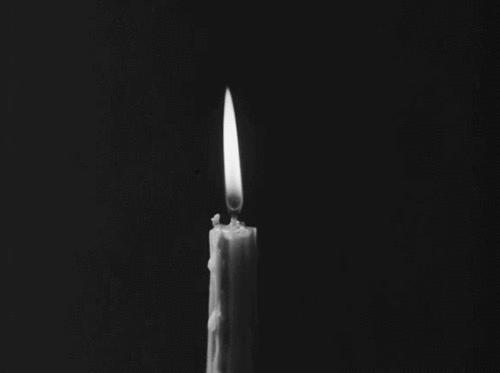
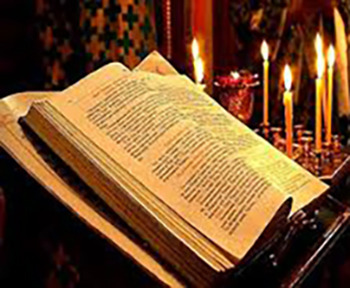
LUKE 21:12-19
12 But before all these things, they will lay their hands on you and persecute you, delivering you up to the synagogues and prisons. You will be brought before kings and rulers for My name's sake. 13 But it will turn out for you as an occasion for testimony. 14 Therefore settle it in your hearts not to meditate beforehand on what you will answer; 15 for I will give you a mouth and wisdom which all your adversaries will not be able to contradict or resist. 16 You will be betrayed even by parents and brothers, relatives and friends; and they will put some of you to death. 17 And you will be hated by all for My name's sake. 18 But not a hair of your head shall be lost. 19 By your patience possess your souls.
EPHESIANS 6:10-17
10 Finally, my brethren, be strong in the Lord and in the power of His might. 11 Put on the whole armor of God, that you may be able to stand against the wiles of the devil. 12 For we do not wrestle against flesh and blood, but against principalities, against powers, against the rulers of the darkness of this age, against spiritual hosts of wickedness in the heavenly places. 13 Therefore take up the whole armor of God, that you may be able to withstand in the evil day, and having done all, to stand. 14 Stand therefore, having girded your waist with truth, having put on the breastplate of righteousness, 15 and having shod your feet with the preparation of the gospel of peace; 16 above all, taking the shield of faith with which you will be able to quench all the fiery darts of the wicked one. 17 And take the helmet of salvation, and the sword of the Spirit, which is the word of God;
#orthodoxy#orthodoxchristianity#easternchristianity#originofchristianity#spirituality#holyscriptures#gospel#bible#wisdom
8 notes
·
View notes
Text
Saints&Reading:Sunday, December, 18, 2022
december 18_december 5
ST SABBAS THE SANCTIFIED (532)

Saint Sabbas the Sanctified was born in the fifth century at Cappadocia of pious Christian parents, John and Sophia, and his father was a military commander. Journeying to Alexandria on military matters, John and Sophia left their five-year-old son Sabbas in the care of an uncle. When the boy was eight years old, he entered the nearby Monastery of Saint Flavian. The gifted child quickly learned to read and became an expert on the Holy Scriptures. His parents urged Saint Savva to return to the world and enter into marriage, but all in vain.
When he was seventeen years old he was tonsured as a monk, and attained such perfection in fasting and prayer that God found him worthy of the gift of working miracles. After spending ten years at the Monastery of Saint Flavian, he went to Jerusalem, and from there to the Monastery of Saint Euthymios the Great (January 20). Saint Euthymios, however, sent the young man to Abba Theoktistos, the head of a nearby monastery with a strict cenobitic Rule. Saint Sabbas lived in obedience at this monastery until the age of thirty.
After the death of Elder Theoktistos, his successor blessed Savva to seclude himself in a cave. But on Saturdays, he left his hermitage and came to the Monastery, where he took part in the Divine Services and ate with the brethren. After a certain time, Saint Sabbas received permission not to leave his hermitage at all, and he struggled in the cave for five years.
Saint Euthymios directed the young monk's life, and seeing his spiritual maturity, he began to take him to the Rouba wilderness with him. They left on January 14, and remained there until Palm Sunday. Saint Euthymios called Saint Sabbas a Child-Elder, and encouraged him to grow in the monastic virtues.
When Saint Euthymios fell asleep in the Lord (+ 473), Saint Savva withdrew from the Lavra and moved to a cave near the monastery of Saint Gerasimos of Jordan (March 4). After several years, disciples began to gather around Saint Sabbas. As the number of monks increased, a Lavra sprang up. Guided by a pillar of fire which appeared before him as he was walking, Saint Savva found a spacious cave in the form of a church.
The holy Elder founded several more monasteries. Many miracles took place through his prayers: at the Lavra, a spring of water welled up, during a time of drought there was abundant rain, and the sick and those possessed by demons were also healed. Saint Sabbas composed the first monastic Rule of Church Services, the “Jerusalem Typikon," followed by all the Palestinian monasteries. The Saint surrendered his soul to God in the year 532.
Saint Sabbas is depicted holding a scroll which reads: "He who loves God disdains corruptible things, and prefers the knowledge of Him."
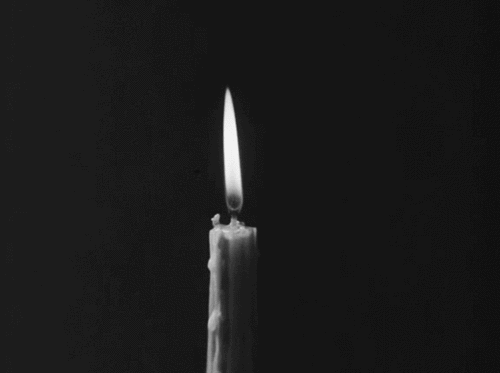

LUKE 17:12-19
12 Then as He entered a certain village, there met Him ten men who were lepers, who stood afar off. 13 And they lifted up their voices and said, "Jesus, Master, have mercy on us!"14So when He saw them, He said to them, "Go, show yourselves to the priests." And so it was that as they went, they were cleansed. 15 And one of them, when he saw that he was healed, returned, and with a loud voice glorified God, 16 and fell down on his face at His feet, giving Him thanks. And he was a Samaritan. 17 So Jesus answered and said, "Were there not ten cleansed? But where are the nine? 18 Were there not any found who returned to give glory to God except this foreigner? 19 And He said to him, "Arise, go your way. Your faith has made you well."
EPHESIANS 6:10-17
10 Finally, my brethren, be strong in the Lord and in the power of His might.11 Put on the whole armor of God, that you may be able to stand against the wiles of the devil. 12 For we do not wrestle against flesh and blood, but against principalities, against powers, against the rulers of the darkness of this age, against spiritual hosts of wickedness in the heavenly places. 13 Therefore take up the whole armor of God, that you may be able to withstand in the evil day, and having done all, to stand. 14 Stand therefore, having girded your waist with truth, having put on the breastplate of righteousness, 15 and having shod your feet with the preparation of the gospel of peace; 16 above all, taking the shield of faith with which you will be able to quench all the fiery darts of the wicked one. 17 And take the helmet of salvation, and the sword of the Spirit, which is the word of God;
#orthodoxy#orthodoxchristianity#easternchristianity#originofchristianity spirituality holyscriptures gospel bible wisdom
7 notes
·
View notes
Text
Saints&Reading: Monday, November 21, 2022. All we need to know about angels
november 21_november 9
SYNAXIS OF THE ARCHANGEL GABRIEL AND THE OTHER BODILESS POWERS

We invoke Saint Michael for protection from invasion by enemies and from civil war, and for the defeat of adversaries on the field of battle. He conquers all spiritual enemies. Michael tramples the devil underfoot, and in his left hand holds a green date-tree branch, and in his right hand a spear with a white banner on which is outlined a scarlet cross, or sometimes a fiery sword.
The Synaxis of the Chief of the Heavenly Hosts, Archangel Michael and the Other Heavenly Bodiless Powers: Archangels Gabriel, Raphael, Uriel, Selaphiel, Jehudiel, Barachiel, and Jeremiel was established at the beginning of the fourth century at the Council of Laodicea, which met several years before the First Ecumenical Council. The 35th Canon of the Council of Laodicea condemned and denounced as heretical the worship of angels as gods and rulers of the world, but affirmed their proper veneration.
A Feastday was established in November, the ninth month after March (with which the year began in ancient times) since there are Nine Ranks of Angels. The eighth day of the month was chosen for the Synaxis of all the Bodiless Powers of Heaven since the Day of the Dread Last Judgment is called the Eighth Day by the holy Fathers. After the end of this age (characterized by its seven days of Creation) will come the Eighth Day, and then “the Son of Man shall come in His Glory and all the holy Angels with Him” (Mt. 25:31).
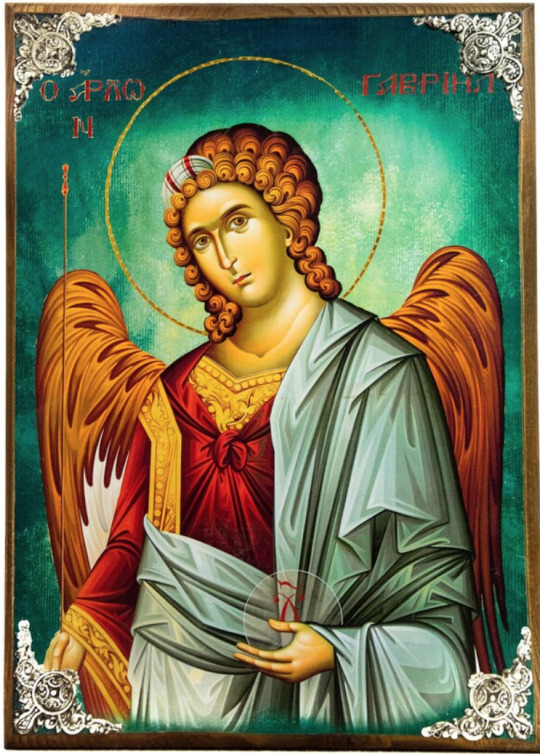
Gabriel: strength (power) of God, herald and servitor of Divine omnipotence (Dan 8:16, Luke 1:26). He announces the mysteries of God. abriel with a branch from Paradise, presented by him to the Most Holy Virgin, or with a shining lantern in his right hand and with a mirror made of jasper in his left.
The Angelic Ranks are divided into three Hierarchies: highest, middle, and lowest.
The Highest Hierarchy includes: the Seraphim, Cherubim and Thrones.
The six-winged SERAPHIM (Flaming, Fiery) (Is 6:2) stand closest of all to the Most Holy Trinity. They blaze with love for God and kindle such love in others.
The many-eyed CHERUBIM (outpouring of wisdom, enlightenment) (Gen 3:24) stand before the Lord after the Seraphim. They are radiant with the light of knowledge of God, and knowledge of the mysteries of God. Through them wisdom is poured forth, and people’s minds are enlightened so they may know God and behold His glory.
The THRONES (Col 1:16) stand after the Cherubim, mysteriously and incomprehensibly bearing God through the grace given them for their service. They are ministers of God’s justice, giving to tribunals, kings, etc. the capacity for righteous judgment.
The Middle Angelic Hierarchy consists of three Ranks: Dominions, Powers, and Authorities:
DOMINIONS (Col 1:16) hold dominion over the angels subject to them. They instruct the earthly authorities, established by God, to rule wisely, and to govern their lands well. The Dominions teach us to subdue sinful impulses, to subject the flesh to the spirit, to master our will, and to conquer temptation.

Raphael: the healing of God, the curer of human infirmities (Tobit 3:16, 12:15). holds a vessel with healing medications in his left hand, and with his right hand leads Tobias, carrying a fish for healing (Tobit 5-8).
POWERS (1 Pet 3:22) fulfill the will of God without hesitation. They work great miracles and give the grace of wonderworking and clairvoyance to saints pleasing to God. The Powers assist people in fulfilling obediences. They also encourage them to be patient, and give them spiritual strength and fortitude.
AUTHORITIES (1 Pet 3:22, Col 1:16) have authority over the devil. They protect people from demonic temptations, and prevent demons from harming people as they would wish. They also uphold ascetics and guard them, helping people in the struggle with evil thoughts.

Uriel: the fire or light of God, enlightener (2 Esdras 5:20). We pray for him to enlighten those with darkened minds. Uriel in his raised right hand holds a naked sword at the level of his chest, and in his lowered left hand “a fiery flame.

Selaphiel: the prayer of God, impelling to prayer (2 Esdras 5:15). He prays to God for mankind. Selaphiel in a prayerful posture, gazing downwards, hands folded on the chest.

Jehudiel: the glorifying of God, encouraging exertion for the glory of the Lord and interceding for the reward of efforts. Jehudiel holds a golden crown in his right hand, in his left, a whip of three red (or black) thongs.

Barachiel: distributor of the blessings of God for good deeds, entreats the mercy of God for people. Barachiel is shown with a white rose on his breast.
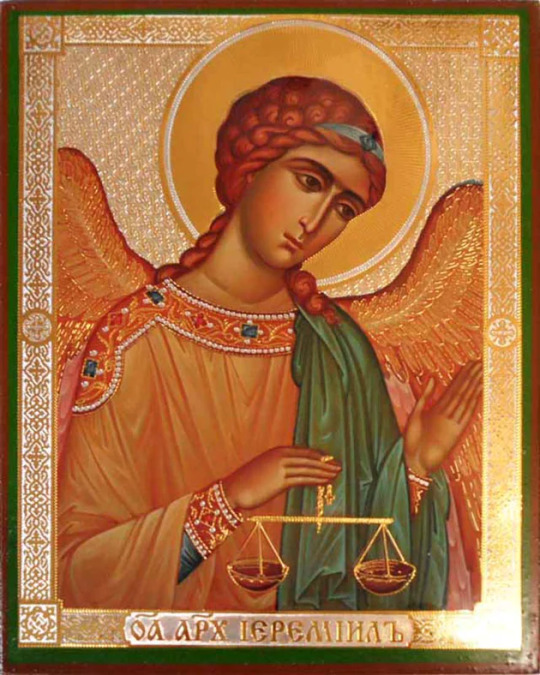
Jeremiel: the raising up to God (2 Esdras 4:36).Jeremiel holds balance-scales in his hand
Iconography:
The Archangels are depicted according to the character of their service.
Ranks
The Lowest Hierarchy includes the three Ranks: Principalities, Archangels, and Angels:
PRINCIPALITIES (Col 1:16) have command over the lower angels, instructing them in the fulfilling of God’s commands. They watch over the world and protect lands, nations and peoples. Principalities instruct people to render proper honor to those in authority, as befits their station. They teach those in authority to use their position, not for personal glory and gain, but to honor God, and to spread word of Him, for the benefit of those under them.
ARCHANGELS (1 Thess 4:16) are messengers of great and wondrous tidings. They reveal prophecies and the mysteries of the faith. They enlighten people to know and understand the will of God, they spread faith in God among the people, illuminating their minds with the light of the Holy Gospel.
ANGELS (1 Pet 3:22) are in the lowest rank of the heavenly hierarchy, and closest to people. They reveal the lesser mysteries of God and His intentions, guiding people to virtuous and holy life. They support those who remain steadfast, and they raise up the fallen. They never abandon us and they are always prepared to help us, if we desire it.
All the Ranks of the Heavenly Powers are called angels, although each has its own name and position by virtue of their service. The Lord reveals His will to the highest ranks of the angels, and they in turn inform the others.
Over all the Nine Ranks, the Lord appointed the Holy Archangel Michael (his name in Hebrew means “who is like unto God”), the faithful servitor of God, as Chief Commander. He cast down from Heaven the arrogantly proud Lucifer and the other fallen spirits when they rebelled against God. Michael summoned the ranks of angels and cried out, “Let us attend! Let us stand aright before our Creator and do not consider doing what is displeasing unto God!
According to Church Tradition, and in the church services to the Archangel Michael, he participated in many other Old Testament events.
During the Exodus of the Israelites from Egypt he went before them in the form of a pillar of cloud by day and a pillar of fire by night. Through him the power of the Lord was made manifest, annihilating the Egyptians and Pharaoh who were in pursuit of the Israelites. The Archangel Michael defended Israel in all its misfortunes.
He appeared to Joshua Son of Navi and revealed the will of the Lord at the taking of Jericho (Josh 5:13-16). The power of the great Chief Commander of God was manifest in the annihilation of the 185,000 soldiers of the Assyrian emperor Sennacherib (4/2 Kings 19:35); also in the smiting of the impious leader Heliodorus (2 Macc. 3: 24-26); and in the protection of the Three Holy Youths: Ananias, Azarias and Misail, thrown into the fiery furnace for their refusal to worship an idol (Dan 3:22-25).
Through the will of God, the Chief Commander Michael transported the Prophet Habbakuk (December 2) from Judea to Babylon, to give food to Daniel in the lions’ den (Dan. 14:33-37).
The Archangel Michael disputed with the devil over the body of the holy Prophet Moses (Jude 1:9).
The holy Archangel Michael showed his power when he miraculously saved a young man, cast into the sea by robbers with a stone about his neck on the shores of Mt Athos. This story is found in the Athonite Paterikon, and in the Life of Saint Neophytus of Docheiariou (November 9).
From ancient times the Archangel Michael was famed for his miracles in Rus. In the Volokolamsk Paterikon is a narrative of Saint Paphnutius of Borov with an account of Tatar tax-gatherers concerning the miraculous saving of Novgorod the Great: “Therefore Great Novgorod was never taken by the Hagarenes... when... for our sins the godless Hagarene emperor Batu devoured and set the Russian land aflame and came to Novgorod, and God and the Most Holy Theotokos shielded it with an appearance of Michael the Archangel, who forbade him to enter into it. He [Batu] was come to the Lithuanian city and came toward Kiev and saw the stone church, over the doors of which the great Archangel Michael had written and spoken to the prince his allotted fate, ‘By this we have forbidden you entry into Great Novgorod’.”
Intercession for Russian cities by the Most Holy Queen of Heaven always involved Her appearances with the Heavenly Hosts, under the leadership of the Archangel Michael. Grateful Rus acclaimed the Most Pure Mother of God and the Archangel Michael in church hymns. Many monasteries, cathedrals, court and merchant churches are dedicated to the Chief Commander Michael.
In old Kiev at the time of the accepting of Christianity, a cathedral of the Archangel was built, and a monastery also was named for him. Archangel cathedrals are found at Smolensk, Nizhni Novgorod, Staritsa, at Great Ustiug (beginning of the thirteenth century), and a cathedral at Sviyazhsk. In Rus there was not a city where there was not a church or chapel dedicated to the Archangel Michael.
One of the chief temples of the city of Moscow, the burial church in the Kremlin, is dedicated to him. Numerous and beautiful icons of the Chief Commander of the Heavenly Hosts are also in his Cathedral. One of these, the Icon “Blessed Soldiery,” was painted in the Dormition Cathedral of the Moscow Kremlin. The saintly soldiers, Russian princes, are depicted under the leadership of the Archangel Michael.
Each person has a guardian angel (Matt 18:10), and every nation also receives its own guardian angel from God (Dan. 10:13). When a church is consecrated, it also receives a guardian angel (Palladius, Dial. Ch. 10).
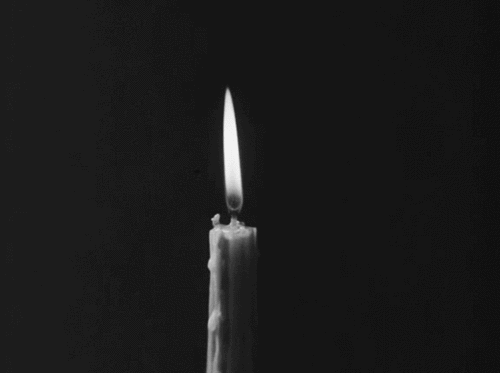
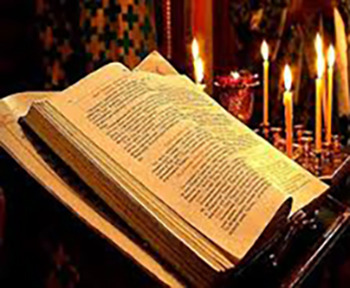
LUKE 10:16-21
16 He who hears you hears Me, he who rejects you rejects Me, and he who rejects Me rejects Him who sent Me. 17 Then the seventy returned with joy, saying, "Lord, even the demons are subject to us in Your name." 18 And He said to them, "I saw Satan fall like lightning from heaven. 19 Behold, I give you the authority to trample on serpents and scorpions, and over all the power of the enemy, and nothing shall by any means hurt you. 20 Nevertheless do not rejoice in this, that the spirits are subject to you, but rather rejoice because your names are written in heaven. 21 In that hour Jesus rejoiced in the Spirit and said, "I thank You, Father, Lord of heaven and earth, that You have hidden these things from the wise and prudent and revealed them to babes. Even so, Father, for so it seemed good in Your sight.
Commentary of the Church Fathers
Clement of Alexandria AD 215: After we have repented of our sins, renounced our wickedness, and have been purified by baptism, we turn back to the eternal light, as children to their Father. “Rejoicing in the spirit, Jesus said, ‘I praise you, Father, God of heaven and earth, that you have hidden these things from the wise and prudent, and revealed them to little ones.’ ” The Educator and Teacher is naming us “little ones,” meaning that we are more ready for salvation than the worldly wise who, believing themselves wise, have blinded their own eyes. He cries out in joy and in great delight, as if attuning himself to the spirit of the little ones, “Yes, Father, for such was your good pleasure.” That is why he has revealed to little ones what has been hid from the wise and prudent of this world.
HEBREWS 2:2-10
2 For if the word spoken through angels proved steadfast, and every transgression and disobedience received a just reward, 3 how shall we escape if we neglect so great a salvation, which at the first began to be spoken by the Lord, and was confirmed to us by those who heard Him, 4 God also bearing witness both with signs and wonders, with various miracles, and gifts of the Holy Spirit, according to His own will? 5 For He has not put the world to come, of which we speak, in subjection to angels. 6 But one testified in a certain place, saying:"What is man that You are mindful of him, Or the son of man that You take care of him? 7 You have made him a little lower than the angels; You have crowned him with glory and honor, And set him over the works of Your hands. 8 You have put all things in subjection under his feet." For in that He put all in subjection under him, He left nothing that is not put under him. But now we do not yet see all things put under him.9 But we see Jesus, who was made a little lower than the angels, for the suffering of death crowned with glory and honor, that He, by the grace of God, might taste death for everyone.10 For it was fitting for Him, for whom are all things and by whom are all things, in bringing many sons to glory, to make the captain of their salvation perfect through sufferings.
Commentary of the Church Father
John Chrysostom AD 407 Now although these things were spoken of human nature generally, they would nevertheless apply more properly to Christ according to the flesh. For this, You have put all things in subjection under his feet, belongs to Him rather than to us. For the Son of God visited us when we were nothing: and after having assumed our [nature], and united it to Himself, He became higher than all. For, he says, in that He has put all things in subjection under Him, He left nothing not put under Him: but now we see not yet all things put under Him. What he means is this:— since he had said, Until I make Your enemies Your footstool Hebrews 1:13—and it was likely that they would still be grieved—then having inserted a few things after this parenthetically, he added this testimony in confirmation of the former. For that they might not say, How is it that He has put His enemies under His feet, when we have suffered so much? He sufficiently hinted at it in the former place indeed (for the word until showed, not what should take place immediately, but in course of time) but here he follows it up. For do not suppose (he says) that because they have not yet been made subject, they are not to be made subject: for that they must be made subject, is evident; for, on this account was the prophecy spoken. For, he says, in that He has put all things under Him, He left nothing not put under Him. How then is it that all things have not been put under Him? Because they are hereafter to be put under Him. If then all things must be made subject to Him, but have not yet been made subject, do not grieve, nor trouble yourself. If indeed when the end had come, and all things were made subject, thou were still suffering these things, with reason would you repine: But now we see not yet all things put under Him. The King has not yet clearly conquered. Why then are you troubled when suffering affliction? The preaching [of the Gospel] has not yet prevailed over all; it is not yet time that they should be altogether made subject.
#orthodoxy#orthodoxchristianity#easternchristianity#originofchristianity#spirituality#holyscriptures#gospel#bible#wisdom
9 notes
·
View notes
Text
Saints&Reading: Friday, December 9, 2022
decembre 9 November 26
THE MONK ALYPIUS THE STYLITE OF ADRIANOPOLIS (640)
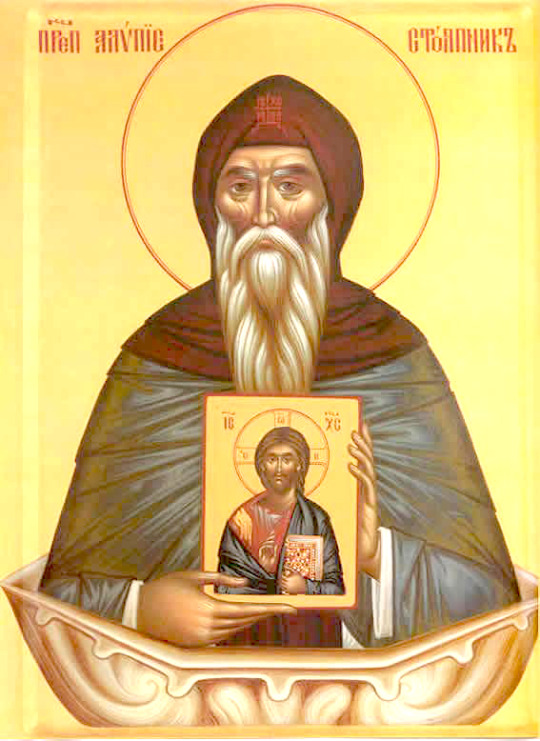
Saint Alypius the Stylite was born in the city of Adrianopolis in Paphlagonia. His mother, a Christian, was widowed early, and she sent her son to be educated by Bishop Theodore. She distributed her substance to the poor, then began to live an ascetic life near the church as a deaconess.
Saint Alypius, from his early years, wanted to devote his life to God and yearned for the solitary life, although Bishop Theodore would not give him permission to do so. Once, when Saint Alypius was accompanying his bishop to Constantinople, the holy Martyr Euphemia (September 16) appeared to him in a vision, summoning Saint Alypius to return to Adrianopolis and found a church in her name.
With contributions offered by believers in Adrianopolis, Saint Alypius did build a church in the name of the holy Martyr Euphemia, on the site of a dilapidated pagan temple infested by legions of devils. Beside the church, under the open sky, the saint erected a pillar over a pagan tomb. For fifty-three years Saint Alypius struggled upon the pillar, praying to God and teaching those who came to him.
The demons which infested the pagan cemetery fell upon the ascetic by night and pelted him with stones. Saint Alypius, wanted nothing to stand in the way of the attacks of the spirits of darkness, then even took down the boards that served him as a roof, protecting him from the rain and wind. In the face of the saint’s conquering steadfastness, the demons forever fled the place, which had been sanctified by his deed of voluntary martyrdom.
Fourteen years before his death, Saint Alypius was no longer able to stand. He was compelled to lie on his side because of the weakness of his legs, and endured grievous sufferings with humble gratitude. Around the saint’s pillar two monasteries sprang up: a men’s monastery on the one side, and a women’s monastery on the other. Saint Alypius introduced strict monastic rules for both monasteries and he directed both monasteries until his death. Saint Alypius reposed in the year 640, at age 118. The body of the venerable stylite was buried in the church he founded in honor of the holy Martyr Euphemia. The relics of the saint of God healed many of those who came in faith.
SAINT INNOKENTII, FIRST BISHOP OF IRKUTSK (1731)
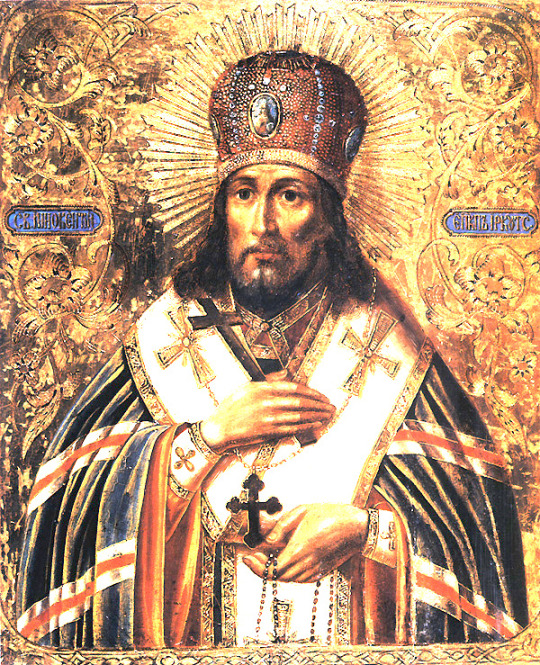
Saint Innocent, Bishop of Irkutsk, (in the world John) was descended from the noble Kulchitsky family. His parents moved from Volhynia to the Chernigov region in the mid-seventeenth century. The saint was born in about the year 1680, and educated at the Kiev Spiritual Academy. He accepted monastic tonsure in 1710 and was appointed an instructor at the Moscow Slavonic-Greek-Latin Academy as prefect and professor of theology.
In 1719 Saint Innocent transferred to the Saint Peterburg Alexander Nevsky Lavra, and was appointed chief naval chaplain. In 1720 he served as vice-regent of the Alexander Nevsky Lavra.
On February 14, 1721, hieromonk Innocent was consecrated as Bishop of Pereyaslavl and appointed to the Peking Spiritual Mission in China. But the Chinese government refused to allow him to enter the country, because the Senate Commission on External Affairs had indiscretely characterized him as “a spiritual personage, a great lord.” The saint was compelled to spend three years at Selingin on the Chinese border, suffering much deprivation because of the uncertainty of his position, and grief from the disarray of the civil government in Siberia. Diplomatic blunders of the Russian Mission in China by Graf Raguzinsky, and intrigues by the Irkutsk archimandrite Anthony Platkovsky led to the appointment of Archimandrite Anthony in China. By decree of the Most Holy Synod Saint Innocent was named in 1727 to be Bishop of Irkutsk and Nerchinsk. And so he entered into the governance of the newly-formed dioceses.
The proximity of the Chinese border, the expanse and sparsely-settled dioceses, the great number of diverse nationalities (Buryat, Mongol, and others), mostly unenlightened by the Christian Faith, the lack of roads and the poverty—all this made Saint Innocent’s pastoral work burdensome and his life full of deprivations. Through a strange oversight of the Senate, he did not receive any money until the time of his death, and he endured extreme want. In these difficult conditions of scant funds, the Irkutsk Ascension monastery still maintained two schools opened under him, one Mongol and the other Russian. The constant concern of the saint was directed towards the schools: the selection of worthy teachers, and providing the necessary books, clothing and other provisions for students.
The saint toiled tirelessly at organizing the diocese, and strengthening its spiritual life. His many sermons, pastoral letters and directives bear witness to this. In his work and deprivations Saint Innocent found spiritual strength, humility, and insight.
In the spring of 1728, the Baikal region began to suffer a drought. Famine from a poor grain harvest had threatened the diocese already back in 1727. With the blessing of the holy hierarch, in May within the churches of Irkutsk and the Irkutsk region they began to include a Molieben for an end to the drought at each Liturgy. On Saturdays they sang an Akathist to the Mother of God, and on Sundays they served a Molieben. “The supplications,” said the saint, “should end on the Feast of Saint Elias” (July 20). Indeed, on that very day a storm raged at Irkutsk with such strong rains, that in the streets of the city water stood up to people’s knees, and thus the drought ended.
Through the efforts of Saint Innocent, construction was started on a stone church to replace the wooden one at the Ascension monastery, and the boundaries of the diocese were expanded to include not only Selingin, but also the Yakutsk and Ilimsk surroundings.
The saint, not noted for robust health, and under the influence of the severe climate and his afflictions, departed to the Lord at a rather young age (51). He reposed on the morning of November 27, 1731.
In the year 1764, the body of the saint was discovered incorrupt during restoration work on the monastery’s Tikhvin church. Many miracles occurred not only at Irkutsk, but also in remote places of Siberia, for those who flocked to the saint with prayer. This moved the Most Holy Synod to uncover the relics and to glorify the saint in the year 1800.
In the year 1804, a feastday was established to celebrate his memory throughout all Russia on November 26, since the Sign Icon of the Mother of God is commemorated on the actual day of his repose (November 27). Saint Innocent is also remembered on February 9.
In 1921, the relics of Saint Innocent were taken from their shrine and placed in a Soviet anti-religious museum. They were moved to another museum in Yaroslav in 1939, and were exhibited as “mummified remains of an unknown man.” In 1990, they were brought to the newly-reopened Tolga Monastery in the Yaroslav diocese. In September of 1990, the holy relics arrived in Irkutsk and were placed in the cathedral, to the joy of all the faithful.
Source: all texts Orthodox Church in America
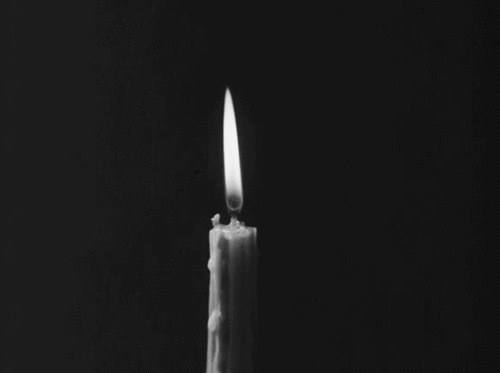
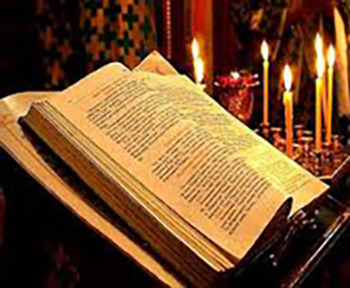
LUKE 19:12-28
11And as they heard these things, he proceeded to tell a parable, because he was near to Jerusalem, and because they thought that the kingdom of God should immediately appear
12 Therefore He said: "A certain nobleman went into a far country to receive for himself a kingdom and to return. 13 So he called ten of his servants, delivered to them ten minas, and said to them, 'Do business till I come.' 14 But his citizens hated him, and sent a delegation after him, saying, 'We will not have this man to reign over us.' 15 And so it was that when he returned, having received the kingdom, he then commanded these servants, to whom he had given the money, to be called to him, that he might know how much every man had gained by trading. 16 Then came the first, saying, 'Master, your mina has earned ten minas.' 17 And he said to him, 'Well done, good servant; because you were faithful in a very little, have authority over ten cities.' 18 And the second came, saying, 'Master, your mina has earned five minas.' 19 Likewise he said to him, 'You also be over five cities.' 20 Then another came, saying, 'Master, here is your mina, which I have kept put away in a handkerchief. 21 'For I feared you, because you are an austere man. You collect what you did not deposit, and reap what you did not sow.' 22 And he said to him, 'Out of your own mouth I will judge you, you wicked servant. You knew that I was an austere man, collecting what I did not deposit and reaping what I did not sow. 23 'Why then did you not put my money in the bank, that at my coming I might have collected it with interest?' 24 And he said to those who stood by, 'Take the mina from him, and give it to him who has ten minas.' 25 ("But they said to him, 'Master, he has ten minas.') 26 'For I say to you, that to everyone who has will be given; and from him who does not have, even what he has will be taken away from him. 27 'But bring here those enemies of mine, who did not want me to reign over them, and slay them before me.' " 28 When He had said this, He went on ahead, going up to Jerusalem.
Commentary of the Church Fathers:
St Ambrose of Milan AD 397: But the ten cities are the souls over whom he is rightly placed who has deposited in the minds of men his Lord's money and the holy words, which are tried as silver is tried in the fire. For as Jerusalem is said to be built as a city, so are peace-making souls. And as angels have rule, so have they who have acquired the life of angels. Or perhaps differently; he who gained five pounds has all the moral virtues, for there are five senses of the body. He who gained ten has so much more, that is to say, the mysteries of the law as well as the moral virtues. The ten pounds may also here be taken tomean the ten words, that is, the teaching of the law; the five pounds, the ordering of discipline. But the scribe must be perfect in all things. And rightly, since He is speaking of the Jews, are there two only who bring their pounds multiplied, not indeed by a gainful interest of money, but a profitable stewardship of the Gospel. For there is one kind of usury in money lent on interest, another in heavenly teaching. Nothing is said of the other servants, who like wasteful debtors lost all that they had received. By those two servants who gained by trading, are signified that small number, who in two companies were sent as dressers of the vineyard; by the remainder all the Jews. It follows, And they said to him, Lord, he has ten pounds. And lest this should seem unjust, it is added, For to every one that has, it shall be given.
St Augustine of Hippo AD 430: Or the far country is the Gentile Church, extending to the uttermost parts of the earth. For He went that the fullness of the Gentiles might come in; He will return that all Israel may be saved. Or by the ten pounds he signifies the law, because of the ten commandments, and by the ten servants, those to whom while under the law grace was preached. For so we must interpret the ten pounds given them for trading. Seeing that they understood the law, when its veil was removed, to belong to the Gospel...
...In the Gospel, you have heard both the reward of the good servants and the punishment of the bad. The fault of that servant who was reproved and severely punished was this and only this: that he would not put to use what he had received. He preserved it intact, but his master was looking for a profit from it. God is greedy for our salvation.
1 TIMOTHY 4:4-8, 16
4 For every creature of God is good, and nothing is to be refused if it is received with thanksgiving; 5 for it is sanctified by the word of God and prayer. 6 If you instruct the brethren in these things, you will be a good minister of Jesus Christ, nourished in the words of faith and of the good doctrine which you have carefully followed. 7 But reject profane and old wives' fables, and exercise yourself toward godliness. 8 For bodily exercise profits a little, but godliness is profitable for all things, having promise of the life that now is and of that which is to come. 16 Take heed to yourself and to the doctrine. Continue in them, for in doing this you will save both yourself and those who hear you.
#orthodoxy#orthodoxchristianity#easternchristianity#originofchristianity#spirituality#holyscriptures#gospel#bible#wisdom
7 notes
·
View notes
Text
Saints&Reading: Thu., July 7, 2022
July 7_june 24
THE NATIVITY OF THE GLORIOUS FORERUNNER AND BAPTIST OF THE LORD, JOHN

The Nativity of the Holy Forerunner and Baptist of the Lord, John: The Gospel (Luke. 1: 5) relates that the righteous parents of Saint John the Baptist, the Priest Zachariah and Elizabeth (September 5), lived in the ancient city of Hebron. They reached old age without having children, since Elizabeth was barren. Once, Saint Zachariah was serving in the Temple at Jerusalem and saw the Archangel Gabriel, standing on the right side of the altar of incense. He predicted that Saint Zachariah would father a son, who would announce the Savior, the Messiah, awaited by the Old Testament Church. Zachariah was troubled, and fear fell upon him. He had doubts that in old age it was possible to have a son, and he asked for a sign. It was given to him, and it was also a chastisement for his unbelief. Zachariah was struck speechless until the time of the fulfillment of the archangel’s words.
Saint Elizabeth came to be with child, and fearing derision at being pregnant so late in life, she kept it secret for five months. Then her relative, the Virgin Mary, came to share with her Her own joy. Elizabeth, “filled with the Holy Spirit,” was the first to greet the Virgin Mary as the Mother of God. Saint John leaped in his mother’s womb at the visit of the Most Holy Virgin Mary and the Son of God incarnate within Her.
Soon Saint Elizabeth gave birth to a son, and all the relatives and acquaintances rejoiced together with her. On the eighth day, in accordance with the Law of Moses, he was circumcised and was called John. Everyone was amazed, since no one in the family had this name. When they asked Saint Zachariah about this, he motioned for a tablet and wrote on it: “His name is John.” Immediately his tongue was loosed, and Saint Zachariah glorified God. He also prophesied about the Coming into the world of the Messiah, and of his own son John, the Forerunner of the Lord (Luke. 1: 68-79).
After the Nativity of our Lord Jesus Christ and the worship of the shepherds and the Magi, wicked king Herod gave orders to kill all male infants. Hearing about this, Saint Elizabeth fled into the wilderness and hid in a cave. Saint Zachariah was at Jerusalem and was doing his priestly service in the Temple. Herod sent soldiers to him to find out the abode of the infant John and his mother. Zachariah answered that their whereabouts were unknown to him, and he was killed right there in the Temple. Righteous Elizabeth continued to live in the wilderness with her son and she died there. The child John, protected by an angel, dwelt in the wilderness until the time when he came preaching repentance, and was accounted worthy to baptize the Lord.
MARTYRS SAINT AGOARD and AGILBERT and COMPANIONS ( 5th. c. Créteil, France)

Agoard and Aglibert were martyrs at Créteil, Paris, France, around 400 AD. Other sources say their martyrdom was in the 7th or 8th century. Saint Agoard and Saint Aglibert are celebrated locally on 24 June.
The relics of Saint Agoard and Saint Aglibert are kept in an old metal reliquary in the crypt of the Saint-Christophe Church, Créteil.[4]Henry Lerolle painted a fresco in this church in 1874, that represents the martyrs. At the beginning of the 20th century, a cross still marked the place that tradition held to be the place of martyrdom.
The monks of St Augustine's Abbey, Ramsgate wrote in their Book of Saints (1921),
A group of Martyrs described as having been so numerous as to defy counting. They appear to have been massacred in a popular outbreak against the Christians, at Créteil, near Paris. The tradition is that SS. Agoardus and Aglibert, their leaders, had come from the Rhine country, and that SS. Ewaldus, Altinus and Savinian had converted them to Christianity. The details concerning these Martyrs, now available, are very untrustworthy; and the dates given still more so. But A.D. 273 seems likely as the year of their triumph.
The hagiographer Alban Butler wrote in his Lives of the Primitive Fathers, Martyrs, and Other Principal Saints (1799),
SS. Agoard and Aglibert, MM. in the Diocese of Paris
They were strangers who came originally from the borders of the Rhine, but were settled in the neighbourhood of Paris at Creteil, a village two leagues from that city. They were converted to the faith by the apostolic preachers Altin and Eoald, together with many others. Having by common consent pulled down a heathenish temple, they were put to the sword with a troop of holy companions, by an order of a heathenish governor; or, according to Baillet, by the Vandals, about the year 400. A church was afterwards erected over the place of their burial. Their relics are now enshrined in the same. Their festival is marked in Martyrologies on the 24th, but kept at Cretail and in the whole diocess of Paris on the 25th of June. See the new Paris breviary, Baillet, Le Boeuf, &c.
Source: Wikipedia


LUKE 1:24-25,57-68,76,80
24 Now after those days his wife Elizabeth conceived; and she hid herself five months, saying, 25 Thus the Lord has dealt with me, in the days when He looked on me, to take away my reproach among people. 57 Now Elizabeth's full time came for her to be delivered, and she brought forth a son. 58 When her neighbors and relatives heard how the Lord had shown great mercy to her, they rejoiced with her. 59 So it was, on the eighth day, that they came to circumcise the child; and they would have called him by the name of his father, Zacharias. 60 His mother answered and said, "No; he shall be called John." 61 But they said to her, "There is no one among your relatives who is called by this name."62 So they made signs to his father-what he would have him called. 63 And he asked for a writing tablet, and wrote, saying, "His name is John." So they all marveled. 64 Immediately his mouth was opened and his tongue loosed, and he spoke, praising God. 65 Then fear came on all who dwelt around them; and all these sayings were discussed throughout all the hill country of Judea. 66 And all those who heard them kept them in their hearts, saying, "What kind of child will this be?" And the hand of the Lord was with him. 67 Now his father Zacharias was filled with the Holy Spirit, and prophesied, saying: 68 Blessed is the Lord God of Israel, For He has visited and redeemed His people, 76 And you, child, will be called the prophet of the Highest; For you will go before the face of the Lord to prepare His ways, 80 So the child grew and became strong in spirit, and was in the deserts till the day of his manifestation to Israel.
ROMANS 13:11-14:4
11 And do this, knowing the time, that now it is high time to awake out of sleep; for now our salvation is nearer than when we first believed.12 The night is far spent, the day is at hand. Therefore let us cast off the works of darkness, and let us put on the armor of light. 13 Let us walk properly, as in the day, not in revelry and drunkenness, not in lewdness and lust, not in strife and envy. 14 But put on the Lord Jesus Christ, and make no provision for the flesh, to fulfill its lusts.
1 Receive one who is weak in the faith, but not to disputes over doubtful things. 2 For one believes he may eat all things, but he who is weak eats only vegetables. 3 Let not him who eats despise him who does not eat, and let not him who does not eat judge him who eats; for God has received him. 4 Who are you to judge another's servant? To his own master he stands or falls. Indeed, he will be made to stand, for God is able to make him stand.
#orthodoxy#orthodoxchristianity#easternchristianity#originofchristianity#spirituality#holyscriptures#gospel#wisdom
10 notes
·
View notes
Text
Saints&Reading: Saturday, December 17, 2022
december 17_december 4
THE GREAT MARTYR BARBARA OF HELIAPOLIS IN SYRIA (306)

The Holy Great Martyr Barbara lived and suffered during the reign of the emperor Maximian (305-311). Her father, the pagan Dioscorus, was a rich and illustrious man in the Syrian city of Heliopolis. After the death of his wife, he devoted himself to his only daughter.
Seeing Barbara’s extraordinary beauty, Dioscorus decided to hide her from the eyes of strangers. Therefore, he built a tower for Barbara, where only her pagan teachers were allowed to see her. From the tower there was a view of hills stretching into the distance. By day she was able to gaze upon the wooded hills, the swiftly flowing rivers, and the meadows covered with a mottled blanket of flowers; by night the harmonious and majestic vault of the heavens twinkled and provided a spectacle of inexpressible beauty. Soon the virgin began to ask herself questions about the First Cause and Creator of so harmonious and splendid a world.
Gradually, she became convinced that the souless idols were merely the work of human hands. Although her father and teachers offered them worship, she realized that the idols could not have made the surrounding world. The desire to know the true God so consumed her soul that Barbara decided to devote all her life to this goal, and to spend her life in virginity.
The fame of her beauty spread throughout the city, and many sought her hand in marriage. But despite the entreaties of her father, she refused all of them. Barbara warned her father that his persistence might end tragically and separate them forever. Dioscorus decided that the temperament of his daughter had been affected by her life of seclusion. He therefore permitted her to leave the tower and gave her full freedom in her choice of friends and acquaintances. Thus Barbara met young Christian maidens in the city, and they taught her about the Creator of the world, about the Trinity, and about the Divine Logos. Through the Providence of God, a priest arrived in Heliopolis from Alexandria disguised as a merchant. After instructing her in the mysteries of the Christian Faith, he baptized Barbara, then returned to his own country.
During this time a luxurious bathhouse was being built at the house of Dioscorus. By his orders the workers prepared to put two windows on the south side. But Barbara, taking advantage of her father’s absence, asked them to make a third window, thereby forming a Trinity of light. On one of the walls of the bath-house Barbara traced a cross with her finger. The cross was deeply etched into the marble, as if by an iron instrument. Later, her footprints were imprinted on the stone steps of the bathhouse. The water of the bathhouse had great healing power. Saint Simeon Metaphrastes (November 9) compared the bathhouse to the stream of Jordan and the Pool of Siloam, because by God’s power, many miracles took place there.
When Dioscorus returned and expressed dissatisfaction about the change in his building plans, his daughter told him about how she had come to know the Triune God, about the saving power of the Son of God, and about the futility of worshipping idols. Dioscorus went into a rage, grabbed a sword and was on the point of striking her with it. The holy virgin fled from her father, and he rushed after her in pursuit. His way became blocked by a hill, which opened up and concealed the saint in a crevice. On the other side of the crevice was an entrance leading upwards. Saint Barbara managed then to conceal herself in a cave on the opposite slope of the hill.
After a long and fruitless search for his daughter, Dioscorus saw two shepherds on the hill. One of them showed him the cave where the saint had hidden. Dioscorus beat his daughter terribly, and then placed her under guard and tried to wear her down with hunger. Finally he handed her over to the prefect of the city, named Martianus. They beat Saint Barbara fiercely: they struck her with rawhide, and rubbed her wounds with a hair cloth to increase her pain. By night Saint Barbara prayed fervently to her Heavenly Bridegroom, and the Savior Himself appeared and healed her wounds. Then they subjected the saint to new, and even more frightful torments.
In the crowd where the martyr was tortured was the virtuous Christian woman Juliana, an inhabitant of Heliopolis. Her heart was filled with sympathy for the voluntary martyrdom of the beautiful and illustrious maiden. Juliana also wanted to suffer for Christ. She began to denounce the torturers in a loud voice, and they seized her.
Both martyrs were tortured for a long time. Their bodies were raked and wounded with hooks, and then they were led naked through the city amidst derision and jeers. Through the prayers of Saint Barbara the Lord sent an angel who covered the nakedness of the holy martyrs with a splendid robe. Then the steadfast confessors of Christ, Saints Barbara and Juliana, were beheaded. Dioscorus himself executed Saint Barbara. The wrath of God was not slow to punish both torturers, Martianus and Dioscorus. They were killed after being struck by lightning.
In the sixth century the relics of the holy Great Martyr Barbara were transferred to Constantinople. Six hundred years later, they were transferred to Kiev (July 11) by Barbara, the daughter of the Byzantine Emperor Alexius Comnenos, wife of the Russian prince Michael Izyaslavich. They rest even now at Kiev’s Saint Vladimir cathedral, where an Akathist to the saint is served each Tuesday.
Many pious Orthodox Christians are in the habit of chanting the Troparion of Saint Barbara each day, recalling the Savior’s promise to her that those who remembered her and her sufferings would be preserved from a sudden, unexpected death, and would not depart this life without benefit of the Holy Mysteries of Christ.
Troparion — Tone 8 Let us honor Saint Barbara, for she broke the snares of the Enemy, and like a bird, escaped from them by the help and weapon of the most Honorable Cross.
THE MONK JOHN DAMASCENE (760)
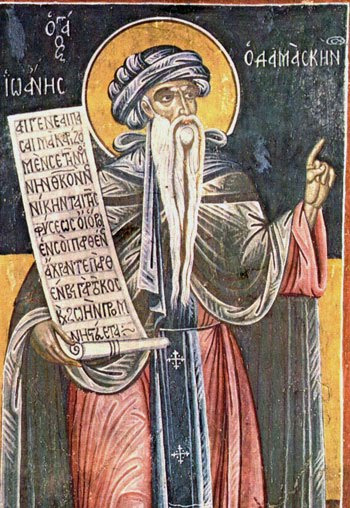
Saint John of Damascus was born about the year 680 at Damascus, Syria into a Christian family. His father, Sergius Mansur, was a treasurer at the court of the Caliph. John had also a foster brother, the orphaned child Cosmas (October 14), whom Sergius had taken into his own home. When the children were growing up, Sergius saw that they received a good education. At the Damascus slave market he ransomed the learned monk Cosmas of Calabria from captivity and entrusted to him the teaching of his children. The boys displayed uncommon ability and readily mastered their courses of the secular and spiritual sciences. After the death of his father, John occupied ministerial posts at court and became the city prefect.
In Constantinople at that time, the heresy of Iconoclasm had arisen and quickly spread, supported by the emperor Leo III the Isaurian (717-741). Rising up in defense of the Orthodox veneration of icons [Iconodoulia], Saint John wrote three treatises entitled, “Against Those who Revile the Holy Icons.” The wise and God-inspired writings of Saint John enraged the emperor. But since the author was not a Byzantine subject, the emperor was unable to lock him up in prison, or to execute him. The emperor then resorted to slander. A forged letter to the emperor was produced, supposedly from John, in which the Damascus official was supposed to have offered his help to Leo in conquering the Syrian capital.
This letter and another hypocritically flattering note were sent to the Saracen Caliph by Leo the Isaurian. The Caliph immediately ordered that Saint John be removed from his post, that his right hand be cut off, and that he be led through the city in chains.
That same evening, they returned the severed hand to Saint John. The saint pressed it to his wrist and prayed to the Most Holy Theotokos to heal him so that he could defend the Orthodox Faith and write once again in praise of the Most Pure Virgin and Her Son. After a time, he fell asleep before the icon of the Mother of God. He heard Her voice telling him that he had been healed, and commanding him to toil unceasingly with his restored hand. Upon awakening, he found that his hand had been attached to his arm once more. Only a small red mark around his wrist remained as a sign of the miracle.
Later, in thanksgiving for being healed, Saint John had a silver model of his hand attached to the icon, which became known as “Of the Three Hands.” Some unlearned painters have given the Mother of God three hands instead of depicting the silver model of Saint John’s hand. The Icon “Of the Three Hands” is commemorated on June 28 and July 12.
When he learned of the miracle, which demonstrated John’s innocence, the Caliph asked his forgiveness and wanted to restore him to his former office, but the saint refused. He gave away his riches to the poor, and went to Jerusalem with his stepbrother and fellow-student, Cosmas. There he entered the monastery of Saint Savva the Sanctified as a simple novice.
It was not easy for him to find a spiritual guide, because all the monks were daunted by his great learning and by his former rank. Only one very experienced Elder, who had the skill to foster the spirit of obedience and humility in a student, would consent to do this. The Elder forbade John to do anything at all according to his own will. He also instructed him to offer to God all his labors and supplications as a perfect sacrifice, and to shed tears which would wash away the sins of his former life.
Once, he sent the novice to Damascus to sell baskets made at the monastery, and commanded him to sell them at a certain inflated price, far above their actual value. He undertook the long journey under the searing sun, dressed in rags. No one in the city recognized the former official of Damascus, for his appearance had been changed by prolonged fasting and ascetic labors. However, Saint John was recognized by his former house steward, who bought all the baskets at the asking price, showing compassion on him for his apparent poverty.
One of the monks happened to die, and his brother begged Saint John to compose something consoling for the burial service. Saint John refused for a long time, but out of pity he yielded to the petition of the grief-stricken monk, and wrote his renowned funeral troparia (“What earthly delight,” “All human vanity,” and others). For this disobedience the Elder banished him from his cell. John fell at his feet and asked to be forgiven, but the Elder remained unyielding. All the monks began to plead for him to allow John to return, but he refused. Then one of the monks asked the Elder to impose a penance on John, and to forgive him if he fulfilled it. The Elder said, “If John wishes to be forgiven, let him wash out all the chamber pots in the lavra, and clean the monastery latrines with his bare hands.”
John rejoiced and eagerly ran to accomplish his shameful task. After a certain while, the Elder was commanded in a vision by the All-Pure and Most Holy Theotokos to allow Saint John to write again. When the Patriarch of Jerusalem heard of Saint John, he ordained him priest and made him a preacher at his cathedral. But Saint John soon returned to the Lavra of Saint Savva, where he spent the rest of his life writing spiritual books and church hymns. He left the monastery only to denounce the iconoclasts at the Constantinople Council of 754. They subjected him to imprisonment and torture, but he endured everything, and through the mercy of God he remained alive. He died in about the year 780, more than 100 years old.
Saint John of Damascus was a theologian and a zealous defender of Orthodoxy. His most important book is the Fount of Knowledge. The third section of this work, “On the Orthodox Faith,” is a summary of Orthodox doctrine and a refutation of heresy. Since he was known as a hymnographer, we pray to Saint John for help in the study of church singing.

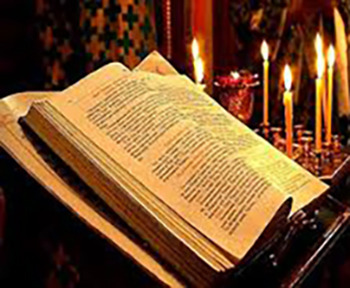
MARK 5:24-34
24 So Jesus went with him, and a great multitude followed Him and thronged Him. 25 Now a certain woman had a flow of blood for twelve years, 26 and had suffered many things from many physicians. She had spent all that she had and was no better, but rather grew worse. 27 When she heard about Jesus, she came behind Him in the crowd and touched His garment. 28 For she said, "If only I may touch His clothes, I shall be made well." 29 Immediately the fountain of her blood was dried up, and she felt in her body that she was healed of the affliction. 30 And Jesus, immediately knowing in Himself that power had gone out of Him, turned around in the crowd and said, "Who touched My clothes?" 31 But His disciples said to Him, "You see the multitude thronging You, and You say, 'Who touched Me?' " 32 And He looked around to see her who had done this thing. 33 But the woman, fearing and trembling, knowing what had happened to her, came and fell down before Him and told Him the whole truth. 34 And He said to her, "Daughter, your faith has made you well. Go in peace, and be healed of your affliction."
GALATIANS 3:23-29
23 But before faith came, we were kept under guard by the law, kept for the faith which would afterward be revealed. 24 Therefore the law was our tutor to bring us to Christ, that we might be justified by faith. 25 But after faith has come, we are no longer under a tutor. 26 For you are all sons of God through faith in Christ Jesus. 27 For as many of you as were baptized into Christ have put on Christ. 28 There is neither Jew nor Greek, there is neither slave nor free, there is neither male nor female; for you are all one in Christ Jesus. 29 And if you are Christ's, then you are Abraham's seed, and heirs according to the promise.
Commentary of the Church Fathers
St John Chrysostom AD 407: See what an insatiable soul! For having said, We are all made children of God through Faith, he does not stop there, but tries to find something more exact, which may serve to convey a still closer oneness with Christ. Having said, you have put on Christ, even this does not suffice Him, but by way of penetrating more deeply into this union, he comments on it thus: You are all One in Christ Jesus, that is, you have all one form and one mould, even Christ's. What can be more awful than these words! He that was a Greek, or Jew, or bond-man yesterday, carries about with him the form, not of an Angel or Archangel, but of the Lord of all, yea displays in his own person the Christ.
St Augustine of Hippo AD 430: difference of race or condition or sex is indeed taken away by the unity of faith, but it remains embedded in our mortal interactions, and in the journey of this life the apostles themselves teach that it is to be respected…. For we observe in the unity of faith that there are no such distinctions. Yet within the orders of this life they persist. So we walk this path in a way that the name and doctrine of God will not be blasphemed. It is not out of fear or anger that we wish to avoid offense to others but also on account of conscience, so that we may do these things not in mere profession, as if for the eyes of men, but with a pure love toward God.
#orthodoxy#orthodoxchristianity#easternchristianity#originofchristianity#spirituality#holyscriptures#bible#gospel#wisdom
3 notes
·
View notes
Text
Icon, Saints&Reading: Friday, August, 5, 2022
August 5_July 23
REPOSE OF ST JOHN CASSIAN THE ROMAN, ABBOT of MARSEILLES (435)
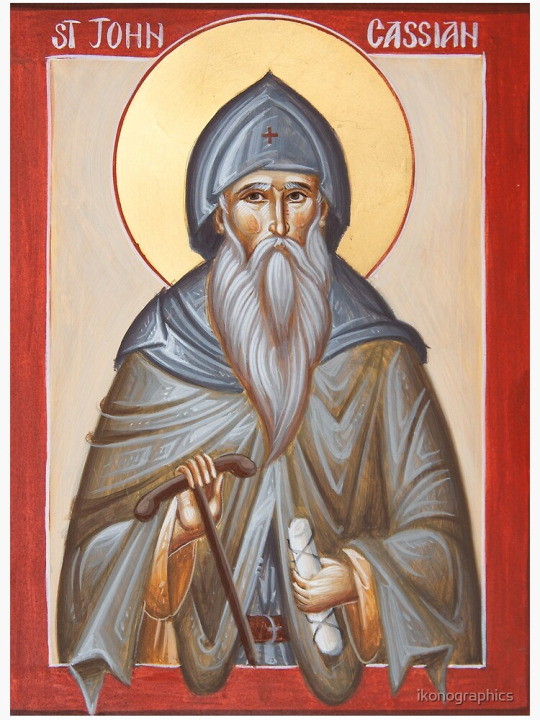
The Synaxarion calls him Our Father Cassian, chosen by God to bring the illumination of Eastern monasticism to the West.
He was born in Scythia of noble parents, and was well educated in secular things. But, thirsting for perfection, he left all behind and travelled with his friend Germanus to the Holy Land, where he became a monk in Bethlehem. After becoming established in the monastic life for several years, St John felt a desire for greater perfection, and sought out the Fathers of the Egyptian Desert.
He spent seven years in the Desert, learning from such Fathers as Moses, Serapion, Theonas, Isaac and Paphnutius. Through long struggles in his cell, St John developed from personal experience a divinely-inspired doctrine of spiritual combat. Many say that it was he who first listed the eight basic passions: gluttony, fornication, avarice, anger, sadness, acedia, vainglory and pride.
In time, struggles in the Alexandrian Church made life so difficult for the Egyptian monks that St John (still accompanied by his friend Germanus), sought refuge in Constantinople, where they came under the care and protection of St John Chrysostom. When the holy Archbishop was exiled, St John once again fled, this time to Rome, where he came under the protection of Pope Innocent I. This proved to be providential for the Western Church, for it was St John who brought the treasures of Desert spirituality to the monasteries of the West.
He founded the monastery of St Victor in Marseilles, then, at the request of his bishop, wrote the Cenobitic Institutions, in which he adapted the austere practices of the Egyptian Fathers to the conditions of life in Gaul.
He went on to write his famous Conferences, which became the main channel by which the wisdom of the desert East was passed to the monastics of the West. Saint Benedict developed much of his Rule (which at one time governed most monasteries in the Latin world) from St John's Institutions and ordered that the Conferences be read in all monasteries.
Saint John reposed in peace in 435, and has been venerated by the monks of the West as their Father and one of their wisest teachers. His relics are still venerated at the Abbey of St Victor in Marseilles.
Source: Celtic Saints
St John's writings were soon attacked by extreme Augustinians and, as Augustinianism became the official doctrine of the Latin Church, his veneration fell out of favour in the West. Outside the Orthodox Church, his commemoration is now limited to the diocese of Marseilles.
http://www.abbamoses.com/months/february.html
St. John Maximovitch of Shanghai & San Francisco felt strongly about introducing Eastern Orthodox Christians to their local, pre-schism western saints. St. John Cassian, abbot of Marseille, France is one of these beloved saints who belong to the common heritage of the Eastern Orthodox Church and the Roman Catholic Church. The writing and wisdom of St John Cassian extend far beyond the French region of Marseille-Provence. In the years 417-419 he wrote 12 books entitled “De Institutis Coenobiorum” (“On the Directives of Coenobitic Life”) from his conversations with Palestinian and Egyptian monks, including 10 conversations with the desert fathers. These books provide his fellow countrymen with examples of life-in-common (cenobitic) monasteries and acquainted them with the spirit of the asceticism of the Orthodox East.
ICON: MOTHER OF GOD _JOY OF ALL SORROWS_ ST PETERSBURG (With coins)
We celebrate today...

The Icon of the Mother of God “Joy of All Who Sorrow” (With Coins) was glorified in the year 1888 in St. Petersburg, when during the time of a terrible thunderstorm lightning struck in a chapel. All was burned or singed, except for this icon of the Queen of Heaven. It was knocked to the floor, and the poor box broke open at the same time. Somehow, twelve small coins (half-kopeck pieces), became attached to the icon. A church was built in 1898 on the site of the chapel.
Source: Orthodox Church in America


MATTHEW 17:10-18
10 And His disciples asked Him, saying, "Why then do the scribes say that Elijah must come first?" 11 Jesus answered and said to them, "Indeed, Elijah is coming first and will restore all things. 12 But I say to you that Elijah has come already, and they did not know him but did to him whatever they wished. Likewise the Son of Man is also about to suffer at their hands. 13 Then the disciples understood that He spoke to them of John the Baptist. 14 And when they had come to the multitude, a man came to Him, kneeling down to Him and saying, 15 Lord, have mercy on my son, for he is an epileptic and suffers severely; for he often falls into the fire and often into the water. 16 So I brought him to Your disciples, but they could not cure him. 17 Then Jesus answered and said, "O faithless and perverse generation, how long shall I be with you? How long shall I bear with you? Bring him here to Me." 18 And Jesus rebuked the demon, and it came out of him; and the child was cured from that very hour.
1 CORINTHIANS 11:8-22
8 For man is not from woman, but woman from man. 9 Nor was man created for the woman, but woman for the man. 10 For this reason the woman ought to have a symbol of authority on her head, because of the angels. 11 Nevertheless, neither is man independent of woman, nor woman independent of man, in the Lord. 12 For as woman came from man, even so man also comes through woman; but all things are from God. 13 Judge among yourselves. Is it proper for a woman to pray to God with her head uncovered? 14 Does not even nature itself teach you that if a man has long hair, it is a dishonor to him? 15 But if a woman has long hair, it is a glory to her; for her hair is given to her for a covering. 16 But if anyone seems to be contentious, we have no such custom, nor do the churches of God. 17 Now in giving these instructions I do not praise you, since you come together not for the better but for the worse. 18 For first of all, when you come together as a church, I hear that there are divisions among you, and in part I believe it. 19 For there must also be factions among you, that those who are approved may be recognized among you. 20 Therefore when you come together in one place, it is not to eat the Lord's Supper. 21 For in eating, each one takes his own supper ahead of others; and one is hungry and another is drunk. 22 What! Do you not have houses to eat and drink in? Or do you despise the church of God and shame those who have nothing? What shall I say to you? Shall I praise you in this? I do not praise you.
#orthodoxy#orthodoxchristianity#easternchristianity#originofchristianity#spirituality#holyscriptures#gospel#bible#wisdom
7 notes
·
View notes
Text
Saints &reading: Saturday, December 3, 2022
december 3_november 20
Forefeast of the Entry of the Most Holy Theotokos into the Temple.

THE MONK GREGORY DEKAPOLITES (816)

Saint Gregory was born in the Isaurian city of Decapolis (ten cities) in the VIII century. From his childhood he loved the house of God and the Church Services. He read the Holy Scripture constantly and with reverence. In order to avoid the marriage which his parents had intended for him, he left home and spent his entire life wandering. He travelled to Constantinople, Rome, Corinth, and he lived as an ascetic on Olympus for a while. Saint Gregory preached the Word of God everywhere, denouncing the Iconoclast heresy, and strengthening the faith and courage of the Orthodox, who were persecuted, tortured, and imprisoned by the Iconoclasts.
Through his ascetical struggles and prayers, Saint Gregory attained the gifts of prophecy and working miracles. After overcoming the passions and attaining the height of virtue, he was permitted to hear the angelic singing in praise of the Holy Trinity. Saint Gregory left the monastery of Saint Menas near Thessaloniki, where he had labored for a long time, and he went to Constantinople again in order to combat the Iconoclast heresy. At the capital, a grievous illness undermined his strength, and he went to the Lord in the year 816.
Saint Gregory was buried at a monastery in Constantinople, and many miracles took place at his tomb. As a result, the monks recovered Saint Gregory's holy relics and enshrined them in the church where people could venerate them.
When Constantinople fell to the Turks in 1453, the relics of Saint Gregory were carried to the region of the Danube by a Turkish official. In 1498 Barbu Craiovescu, the Ban of Wallachia heard of the miracles performed by the holy relics and he bought them for a considerable sum of money. Barbu Craiovescu placed the relics in the main church of Bistrița's Dormition Monastery which he founded at Rimnicu Vilcea,1 where they remain to the present day.
A small booklet describing the miracles and healings performed by Saint Gregory the Decapolite in Romania was written by Igoumeness Olga Gologan, who reposed in 1972.
1 Located in Neamț County, Romania.
SAINT PROCLUS, ARCHBISHOP OF CONSTANTINOPLE
(447)

Saint Proclus, Archbishop of Constantinople, from his early years devoted all his time to prayer and the study of Holy Scripture. The Lord granted him the great good fortune to be a disciple of Saint John Chrysostom (November 13), who at first ordained him as a deacon, and then to the holy priesthood. He witnessed the appearance of the Apostle Paul to Saint John Chrysostom. Saint Proclus received from his teacher a profound understanding of Holy Scripture, and learned to elucidate his thoughts in a polished form.
After the exile and death of Saint John Chrysostom, the holy Patriarch of Constantinople Sisinius (426-427) consecrated Saint Proclus as bishop of the city of Kyzikos, but under the influence of Nestorian heretics he was expelled by his flock there.
Saint Proclus then returned to the capital and preached the Word of God in the churches of Constantinople, strengthening listeners in the Orthodox Faith and denouncing the impiety of the heretics. He once preached a sermon before Nestorius in which he fearlessly defended the title “Theotokos” in speaking of the holy Virgin. Upon the death of the Patriarch Saint Sisinius, Saint Proclus was chosen to take his place. Having thus been made Patriarch of Constantinople, he guided the Church over the course of twelve years (434-447). By the efforts of Saint Proclus, the relics of Saint John Chrysostom were transferred from Comana to Constantinople in the time of the holy emperor Saint Theodosius II (408-450).
When Saint Proclus was Patriarch, the Empire suffered destructive earthquakes, lasting for several months. At Bithynia, in the Hellespont, and in Phrygia cities were devastated, rivers disappeared from the face of the earth, and terrible flooding occurred in previously dry places. The people of Constantinople came out of the city with the patriarch and emperor at their head and offered prayers for an end to the unprecedented calamities.
During one prayer service, a boy from the crowd was snatched up into the air by an unseen force and carried up to such a height that he was no longer to be seen by human eyes. Then, whole and unharmed, the child was lowered to the ground and he reported that he heard and he saw the angels glorifying God singing: “Holy God, Holy Mighty, Holy Immortal.” All the people began to sing this Trisagion Prayer, adding to it the refrain, “Have mercy on us!” Then the earthquakes stopped. The Orthodox Church sings still this prayer at divine services to this very day.
The Constantinople flock esteemed their Patriarch for his ascetic life, for his concern about the downtrodden, and for his preaching. Many works of the saint have survived to the present day. Best known are his discourses against the Nestorians, two tracts of the Saint in praise of the Mother of God, and four tracts on the Nativity of Christ, setting forth the Orthodox teaching about the Incarnation of the Son of God. The activity of the holy patriarch in establishing decorum in all the church affairs gained him universal esteem. Surrounded by love and respect, Saint Proclus departed to the Lord after serving as Patriarch for twenty years.
Source: all texts Orthodox Church of America


LUKE 9:57-62
57 Now it happened as they journeyed on the road, that someone said to Him, "Lord, I will follow You wherever You go." 58 And Jesus said to him, "Foxes have holes and birds of the air have nests, but the Son of Man has nowhere to lay His head." 59 Then He said to another, "Follow Me." But he said, "Lord, let me first go and bury my father." 60 Jesus said to him, "Let the dead bury their own dead, but you go and preach the kingdom of God." 61 And another also said, "Lord, I will follow You, but let me first go and bid them farewell who are at my house." 62 But Jesus said to him, "No one, having put his hand to the plow, and looking back, is fit for the kingdom of God."
GALATIANS 1:3-10
3 Grace to you and peace from God the Father and our Lord Jesus Christ,4 who gave Himself for our sins, that He might deliver us from this present evil age, according to the will of our God and Father, 5 to whom be glory forever and ever. Amen. 6 I marvel that you are turning away so soon from Him who called you in the grace of Christ, to a different gospel, 7 which is not another; but there are some who trouble you and want to pervert the gospel of Christ. 8 But even if we, or an angel from heaven, preach any other gospel to you than what we have preached to you, let him be accursed. 9 As we have said before, so now I say again, if anyone preaches any other gospel to you than what you have received, let him be accursed. 10 For do I now persuade men, or God? Or do I seek to please men? For if I still pleased men, I would not be a bondservant of Christ.
#orthodoxy#orthodoxchristianity#easternchristianity#originofchristianity#spirituality#holyscriptures#gospel#bible#wisdom
3 notes
·
View notes